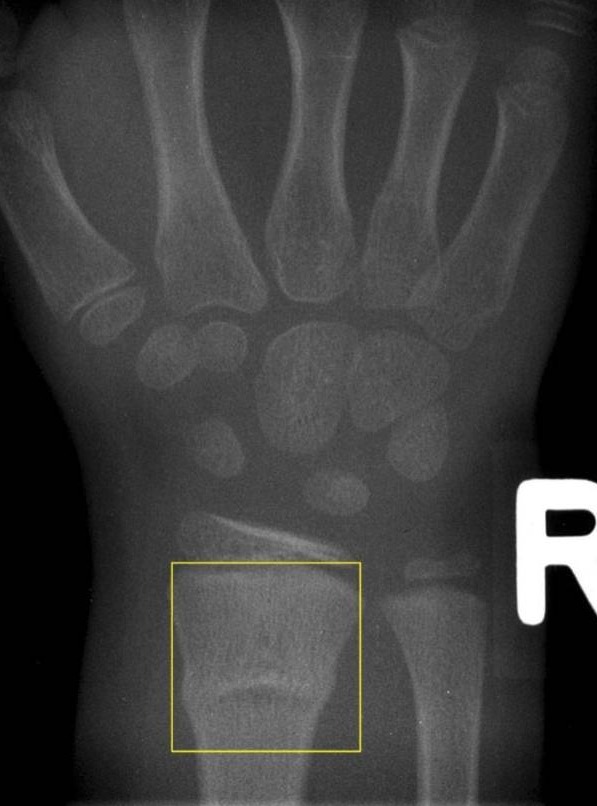

Growth plate injuries around the wrist and shoulder usually heal without problems. The part of the radius connected to the wrist joint is called the distal radius. Metacarpal fractures are common injuries. You can feel your metacarpals by pressing on the back of your hand. Your metacarpals are the bones in your hand that connect your thumb and finger bones (your phalanges) to your wrist. Patient or population: children with stable wrist fracture. A metacarpal fracture is a type of bone fracture (broken bone). This results in distinct fracture patterns in children, such as the buckle and greenstick fractures, where the bone distorts or bends rather than breaking at all or completely. A growth plate fracture at the knee can cause the leg to be shorter, longer or crooked if the growth plate has permanent damage. Childrens bones, especially in younger children, are softer and more pliable than those of adults. The growth plates around the knee are more sensitive to injury. If a child is almost done growing, permanent damage to the growth plate may cause only minimal deformity. Younger children have more years of growth ahead of them, so if the growth plate is permanently damaged, there is more chance of deformity developing. If the growth plate has been shifted, shattered or crushed, the risk of limb deformity is greater. But the following factors can increase the risk of crooked, accelerated or stunted bone growth. Most growth plate fractures heal with no complications.

By the age of 12, most girls' growth plates have already matured and been replaced with solid bone. Growth plate fractures occur twice as often in boys as in girls, because girls finish growing earlier than do boys. A torus fracture can occur in any long bone, but it most commonly. Growth plate fractures can occasionally be caused by overuse, which can occur during sports training or repetitive throwing. Torus fractures are most common in children because their bones are softer than adult bones. Recreational activities, such as biking, sledding, skiing or skateboarding.Competitive sports, such as football, basketball, running, dancing or gymnastics.You'll be asked to attend follow-up appointments to check how your arm or wrist is healing.Growth plate fractures often are caused by a fall or a blow to the limb, as might occur in:
BUCKLE FRACTURE WRIST IN ADULTS HOW TO
If you had a very bad break, surgery may be carried out to fix broken bones back into place.īefore leaving hospital, you'll be given painkillers to take home and advice on how to look after your cast. You'll be given medicine before this happens so you will not feel any pain. You may be given a sling to support your arm.Ī doctor may try to fit the broken bones back into place with their hands before applying a splint or cast. Sometimes this may be done a few days later to allow any swelling to go down first. Other bones susceptible to buckle fractures include: Femur (thigh). You will also be given painkilling medicines for the pain.Īn X-ray is then used to see if there is a break and how bad that break is.Ī plaster cast can be used to keep your arm in place until it heals. Buckle fractures commonly affect the radius and ulna (the bones that connect your forearm to your wrist), but they can happen to any long bone. When you get to hospital the affected arm will be placed in a splint to support it and stop any broken bones from moving out of position. The St John Ambulance website has information about how to make an arm sling Treatment for a broken arm or wrist


 0 kommentar(er)
0 kommentar(er)
